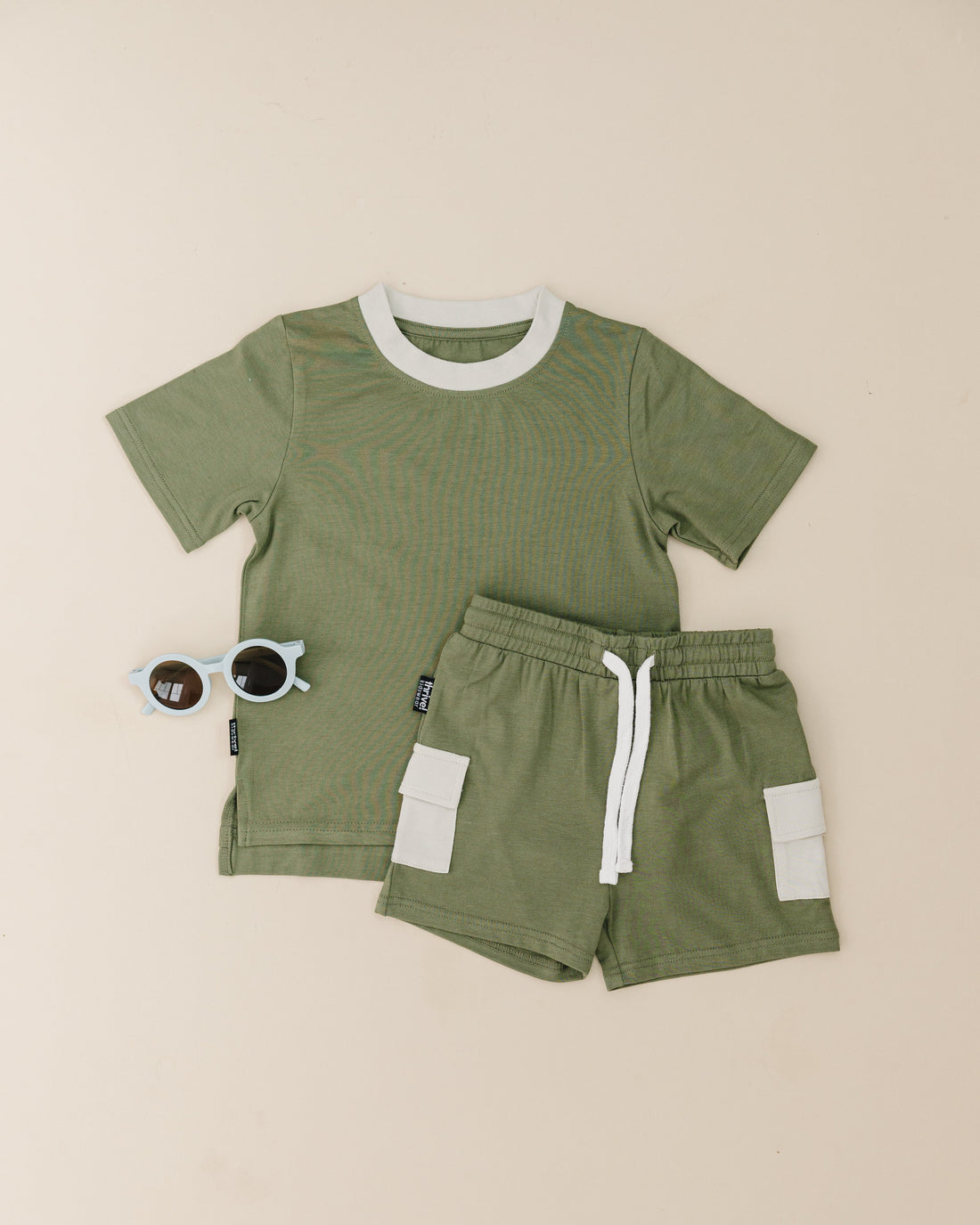
Seasonal Closet Organization: How to Store and Rotate Kids' Clothes
Share
As the seasons change, so do the needs of your little ones when it comes to clothing. Keeping their wardrobes organized not only helps maintain a sense of order, but it also allows you to make the most of trendy children’s clothing without overcrowding their closet. If you’re looking for ways to store and rotate your kids' clothes efficiently while keeping them stylish and eco-friendly, you’ve come to the right place!
Whether you’re dealing with a growing wardrobe, managing hand-me-downs, or looking to make room for trendy kids' clothes, seasonal closet organization is a must. Here’s a guide on how to effectively store and rotate your kids’ clothes, so they’re always ready to wear their favorite stylish and eco-friendly outfits.
Step 1: Sort and Declutter Your Kids' Closet
Before you dive into organizing your children's clothing for the upcoming season, take some time to declutter their closet. Start by removing clothes that no longer fit, are worn out, or aren’t practical for the season ahead. If your child has outgrown certain pieces, it’s time to say goodbye. Donating gently used, still-stylish kids' clothes is a great way to keep the closet fresh while supporting sustainable practices.
To make the process easier, go through their wardrobe and sort clothes by categories such as:
- Current season (clothes they can wear right now)
- Outgrown or too small
- Pieces to save for future seasons
- Hand-me-downs or clothes to pass on
By breaking the clothes into these groups, you can easily see what’s working and what’s not, allowing you to make space for trendy and stylish children’s clothing for the upcoming season.
Step 2: Rotate and Store Out-of-Season Clothes
Once you’ve sorted through your kids' clothes, it’s time to store away out-of-season items. If it’s summer and you need to store winter clothes, or vice versa, organizing them by season will save you time when the weather changes again. Here’s how to do it:
-
Use Storage Bins or Vacuum-Seal Bags: For bulkier winter coats, sweaters, and accessories, opt for clear plastic bins with lids or vacuum-seal bags to keep the items safe, clean, and compact. Label each bin with the season and size for easy identification.
-
Keep Clothes Clean: Before storing any clothing, make sure they’re clean. This will prevent any stains from setting in and will keep your clothes smelling fresh. Store clothes in a cool, dry place to avoid mildew or pests.
-
Consider the Fabric: For trendy kids' clothes made from more delicate or natural fabrics, such as wool or cotton, it’s important to store them in a way that prevents damage. Avoid storing clothes in direct sunlight or humid areas to preserve their quality and appearance.
Step 3: Organize Current Season Clothes for Easy Access
Now that your out-of-season clothes are packed away, focus on organizing your kids' clothes for the current season. Here are some tips for making everything easily accessible:
-
Use Drawer Dividers or Bins: To keep clothes neat and tidy, use dividers in drawers or storage bins for different clothing categories. This will make it easier to find the right pieces when you’re in a rush. Store everyday essentials like shirts, pants, and socks at the front of the closet so they’re easy to grab.
-
Create Outfit Stations: If your kids are old enough, try creating little "outfit stations" where each outfit is pre-selected for the day. This can save time during busy mornings and ensures they’re dressed in stylish children’s clothing without much effort.
-
Incorporate Trendy and Versatile Pieces: When organizing your children’s wardrobe, make sure to keep trendy kids' clothes and stylish children’s clothing pieces front and center. Mixing and matching vibrant prints, fun patterns, and neutral basics can create endless outfit combinations. Don’t forget to have a few eco-friendly kids' clothes items available too. Organic cotton shirts or clothes made from recycled fabrics are not only kind to the planet but can be stylish and comfortable.
Step 4: Rotate Clothing as Your Child Grows
Kids grow quickly, and as they move through different sizes, it’s important to regularly rotate their clothing to accommodate their changing needs. Keep an eye on the fit of their clothes and replace any pieces that are too small. Consider implementing a "one-in, one-out" rule when purchasing new trendy kids' clothes. This way, you’ll prevent the closet from becoming overcrowded.
-
Keep a Size Chart: As your child grows, keeping a size chart for their clothing can help you manage what to keep and what to donate. You’ll always know which sizes are in rotation and what might need to be packed away for future use.
-
Seasonal Check-ins: At the beginning of each season, do a quick inventory check to see if anything needs to be swapped out. For example, before the start of spring, make sure your child has enough lightweight layers and short-sleeve shirts, while making space for warmer winter wear once the cold months approach.
Step 5: Go Eco-Friendly with Your Organization
As a parent, you may want to make your closet organization not only efficient but also eco-friendly. Consider investing in clothing made from sustainable materials, like organic cotton, bamboo, or recycled fabrics, for your kids' wardrobes. These stylish, eco-friendly kids' clothes are both durable and kind to the environment.
Additionally, consider donating or swapping outgrown clothes instead of throwing them away. This promotes a circular wardrobe, reducing waste while ensuring other families can benefit from gently used, trendy children’s clothing.
Final Thoughts
Seasonal closet organization doesn’t have to be a stressful task. By decluttering, storing out-of-season clothes properly, and rotating items as your child grows, you can create a functional, stylish, and sustainable wardrobe for your little one. Keeping trendy kids' clothes and eco-friendly kids' clothes in the mix will ensure your child always looks their best while you maintain a clutter-free space.
